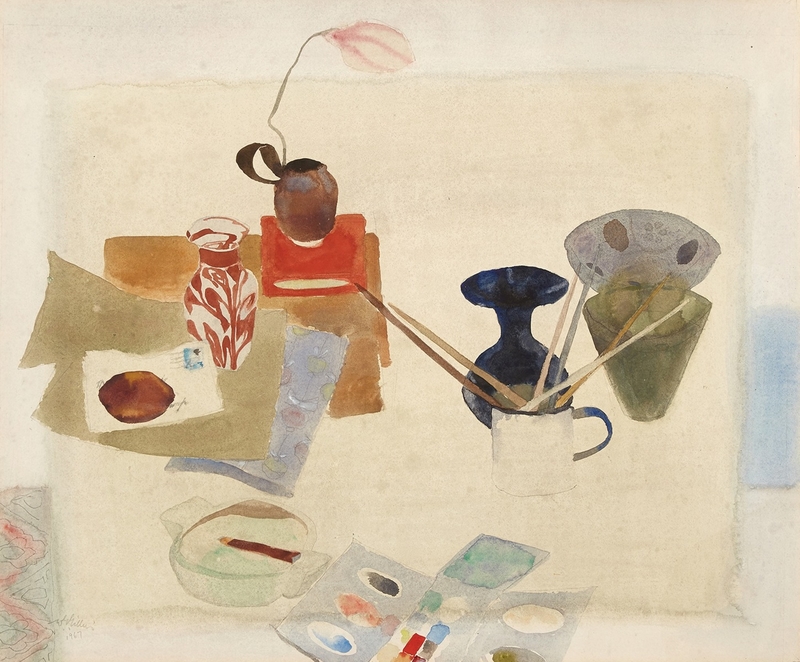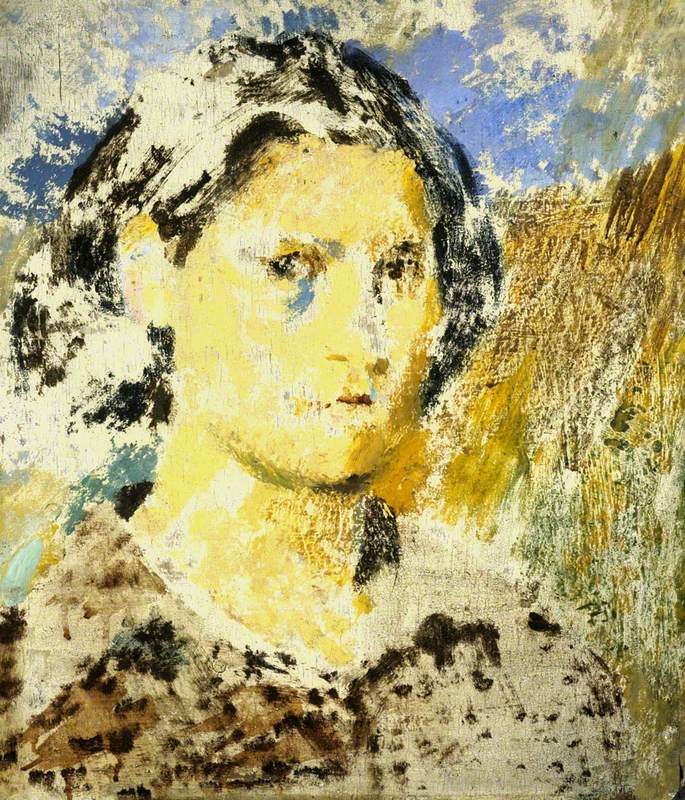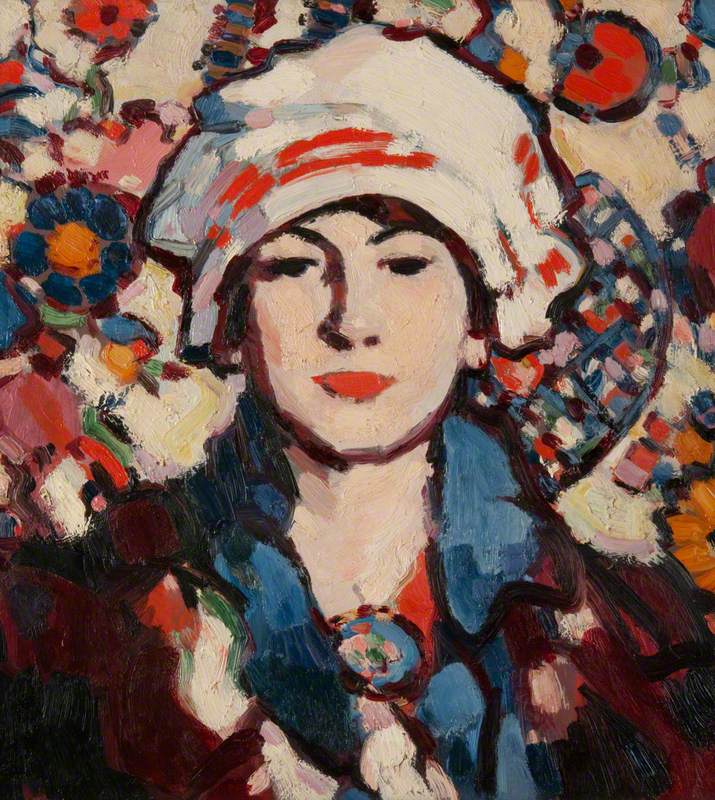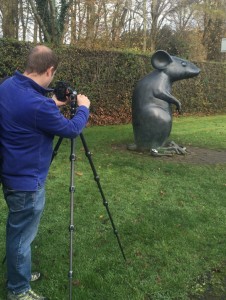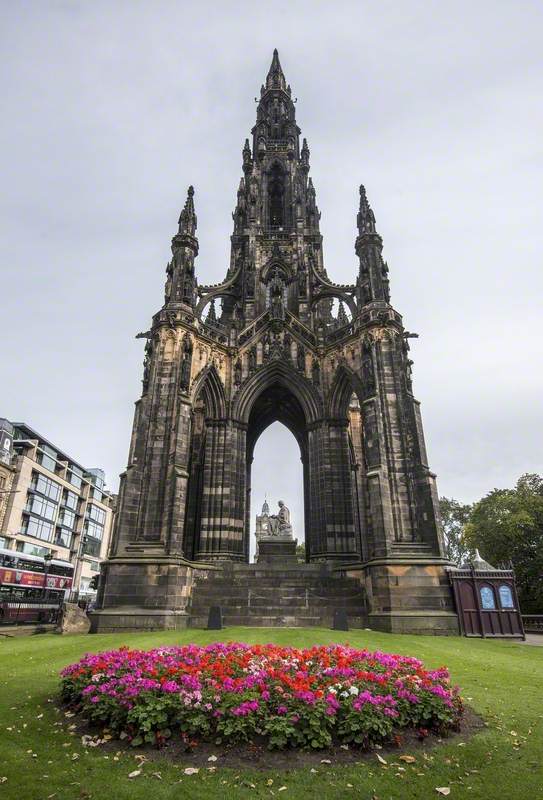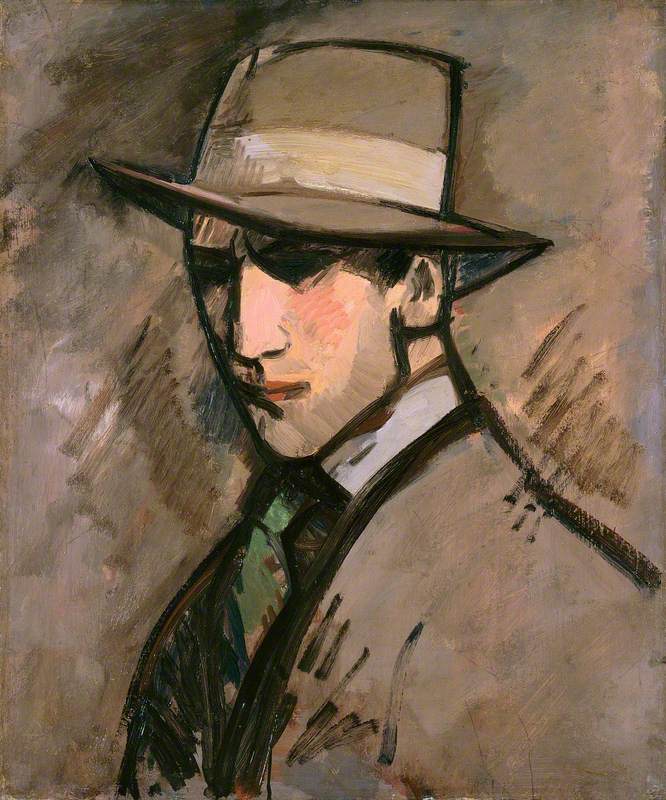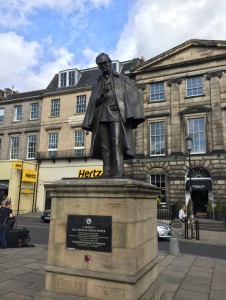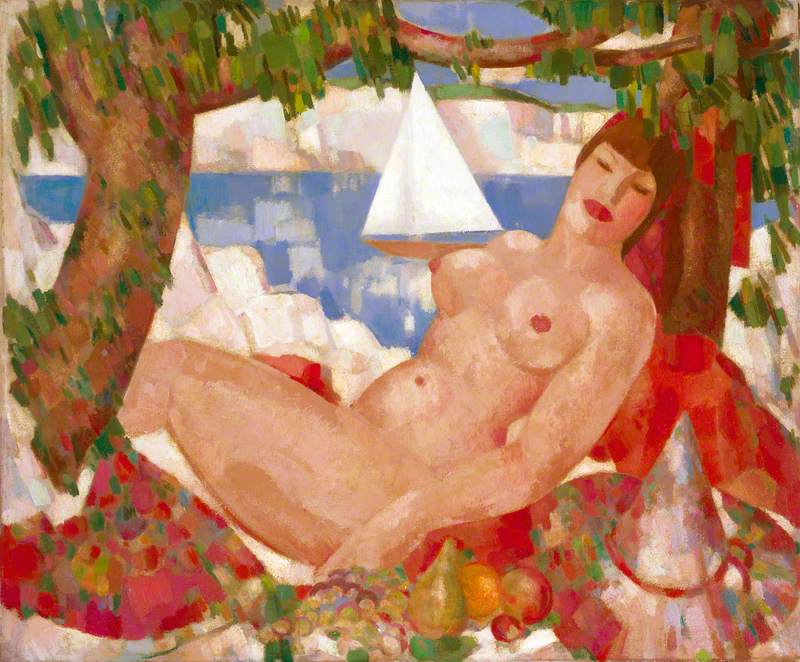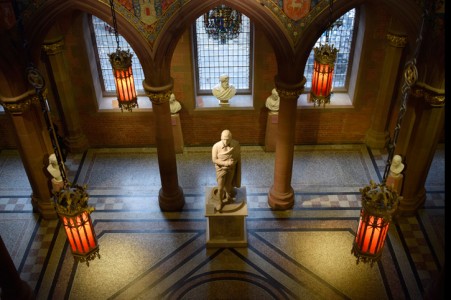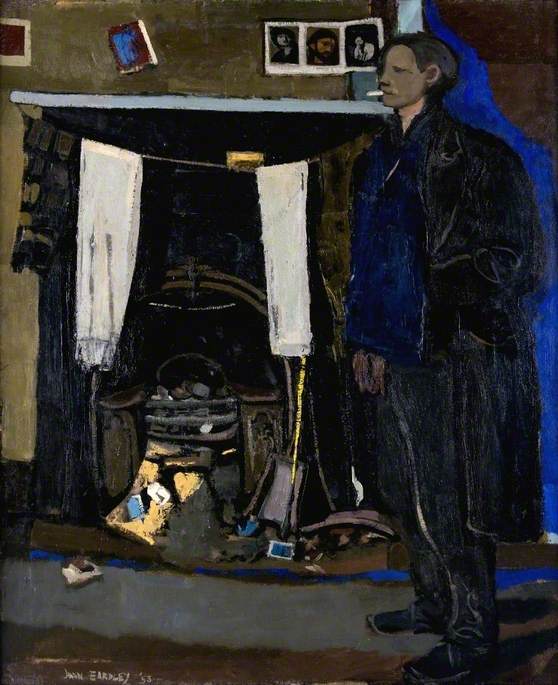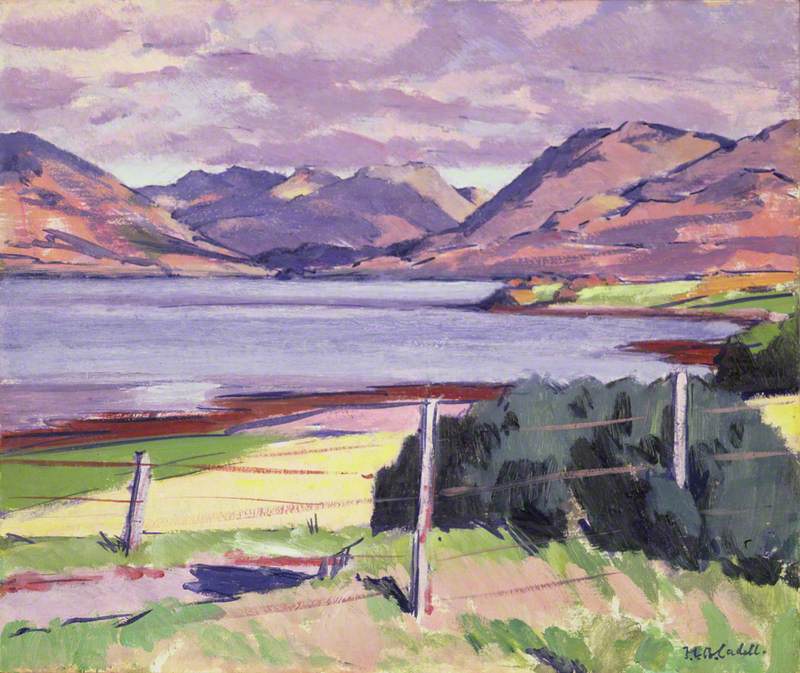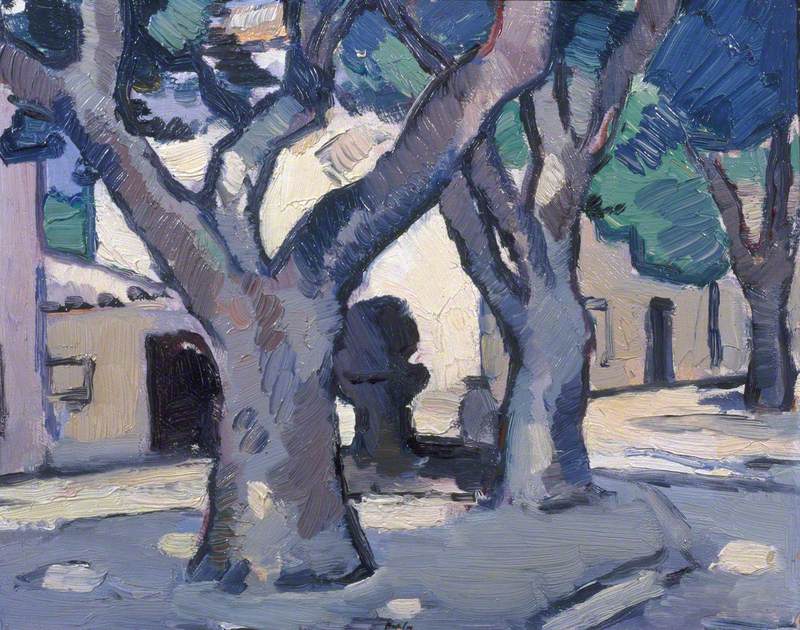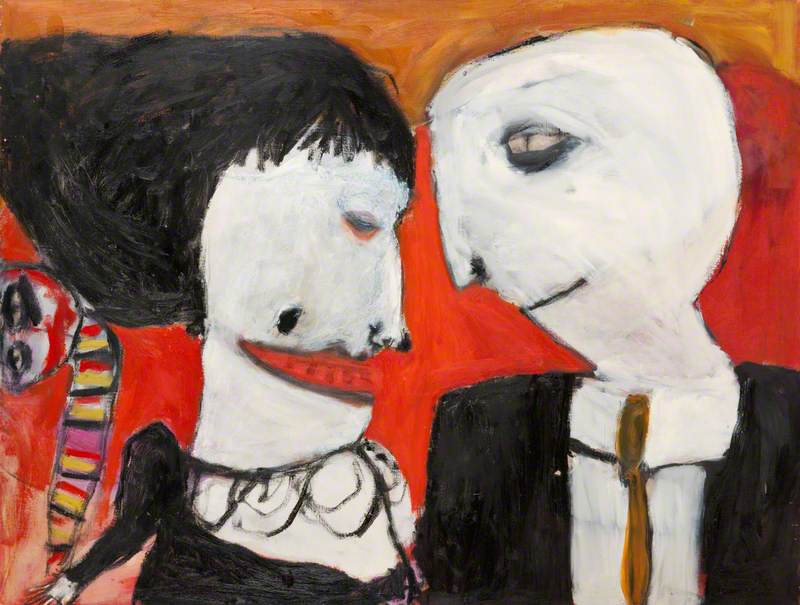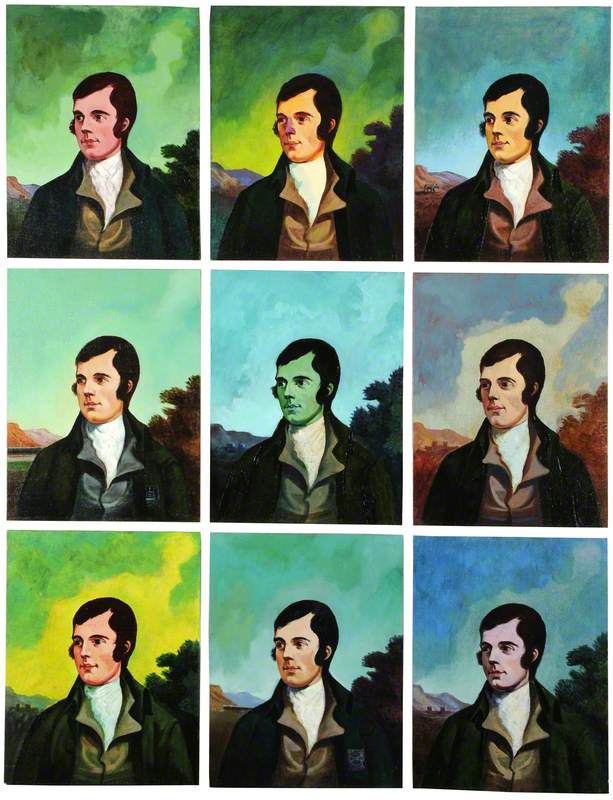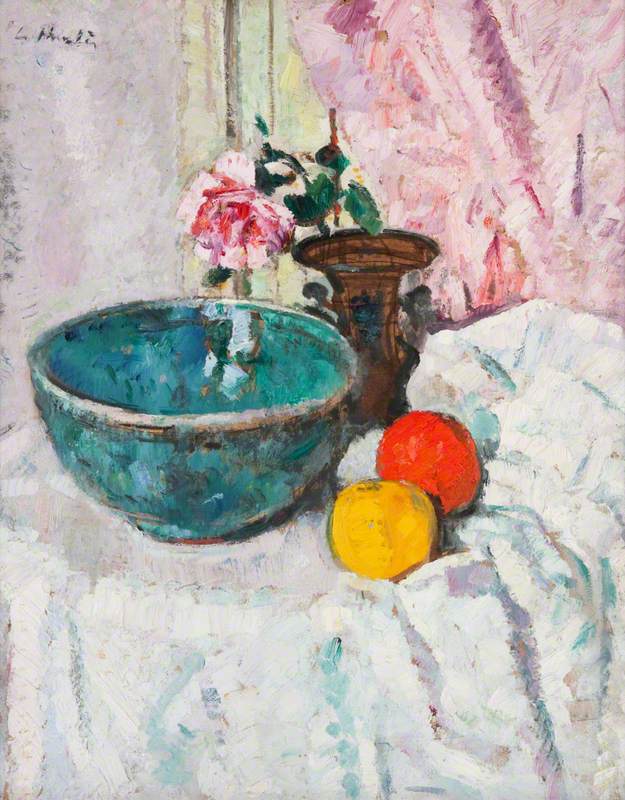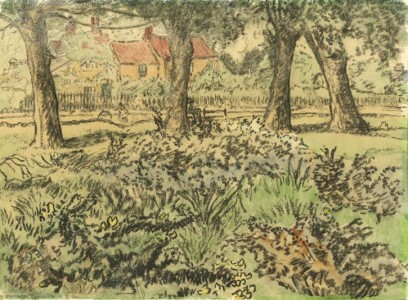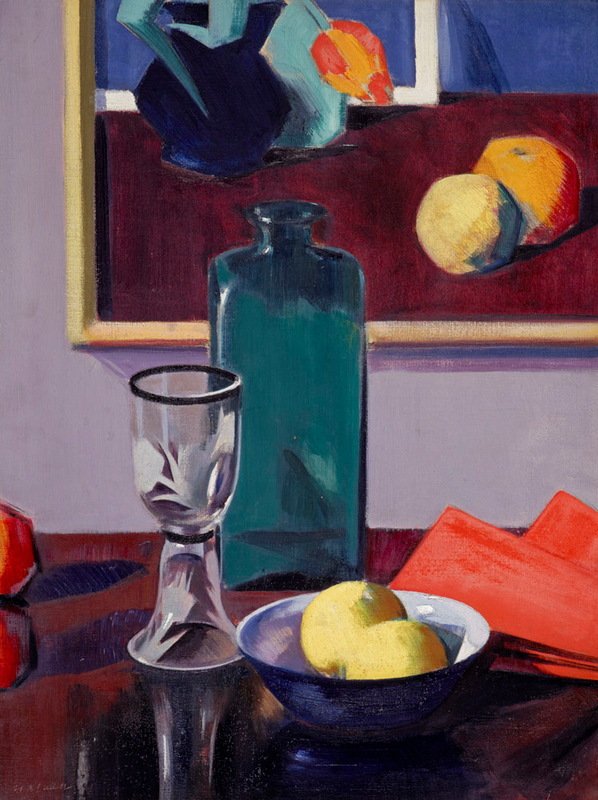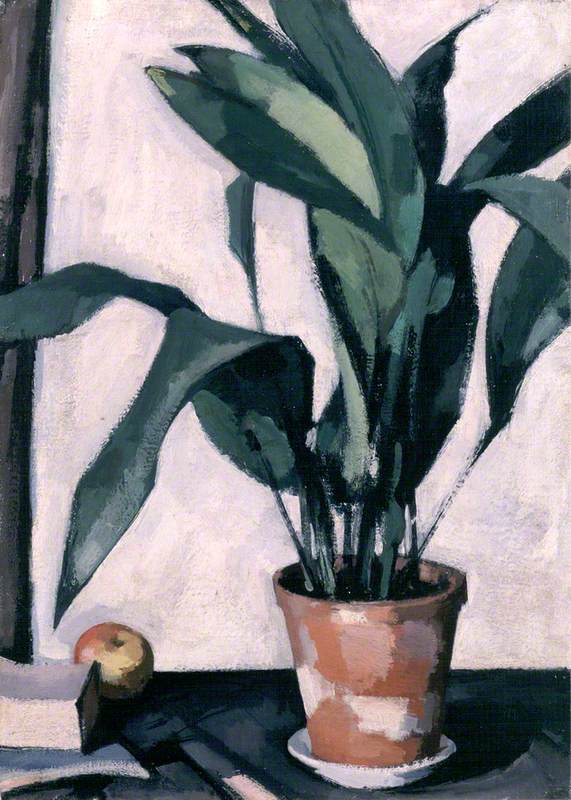The Scottish Gallery opens 2023 with 'Ten Years of Modern Masters'. A decade since the exhibition series was first launched, it has done much to celebrate Scottish painting and highlight the history of The Scottish Gallery.
Strathmore
2003, oil on board by James Morrison (1932–2020) 
'Modern Masters' explores The Gallery's history, providing academic notes and provenance information from their unique daybooks and archive. The accumulation of their publications now provides a real insight and contemporary dialogue into twentieth-century Scottish art. The anniversary exhibition includes an exceptional collection of paintings, tapestries and furniture. They pay a modest tribute to the Scottish Colourists, who were among the first artists to lead The Scottish Gallery's programme of curated solo exhibitions.
The Scottish Colourists are represented in the exhibition by the work of George Leslie Hunter. Hunter stayed in California when his family returned to Scotland in 1898. He was already determined to be an artist and moved to San Francisco, securing studio digs in one of the terraces overlooking the panorama of the bay. Years later Hunter recalled his time with great affection, getting a square meal at the Hotel de France or Lola's for fifteen cents, drawing constantly, finding his subjects in the music halls, street markets and theatres of China Town.
The Flower Market, New Orleans
watercolour, white chalk & Conte on paper by George Leslie Hunter (1877–1931) 
The Flower Market may well be one of Hunter's works acquired from S. S. White of Philadelphia by Honeyman after the artist's death. White had met Hunter in Paris in 1904 and acquired the sketches. The title may well be original although it is now recorded that Hunter visited New Orleans. Instead, the subject may represent a commission, most likely for a book illustration. The drawing has a strong narrative element and is typical of Hunter's best early work: strong, direct and dramatic in a skilfully handled medium.
Poland-born Aleksander Żyw is also represented in the exhibition, which provides an understanding of the small but vital role The Gallery played during and after the Second World War, when artists forced to flee Europe found their way to Scotland, and The Gallery provided a home for their art.
Although based in Scotland, working from his studio in Edinburgh's Dean Village, Żyw's outlook was distinctly European. Since the war, his practice developed at pace, turning his back on naturalism in favour of an expressionist language in an attempt to make sense of the new world order.
Zarysy (Outlines)
1951, oil on canvas by Aleksander Żyw (1905–1995) 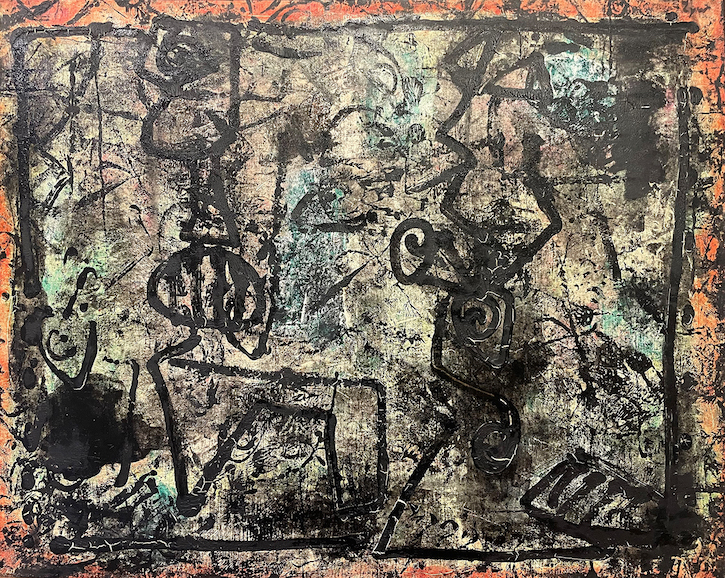
Zarysy, dating from 1951 was exhibited at his first Paris exhibition of the same year. In it, Żyw has built up the surface of the painting with layers of colour, before applying intuitive black line with a loaded brush. The hieroglyphs are freely drawn – in them, animals, numbers and shapes are combined in a fretwork of graphic line which is at once ambiguous but equally compelling.
The exhibition showcases one of Joan Eardley's finest seascapes from Catterline, alongside a double-sided portrait from her other most celebrated subject: Townhead, in Glasgow.
There is an enduring fascination for Eardley far beyond her unconventional life and early death at the age of 42. Eardley was an unrelenting, driven talent who was represented by The Gallery during her lifetime, which continues to celebrate her talent, including her centenary in 2021.
Born in 1921 in Sussex, Eardley's family moved to Scotland in 1939 and a year later she joined the Glasgow School of Art. She found subjects in the shipyards of Clydebank and Townhead, at first the run-down tenements and buildings and later the children and street life around the Maternity Hospital on Rottenrow where the character of the people and the place became the vital subject of her work.
Winter Sea II
oil on board by Joan Kathleen Harding Eardley (1921–1963) 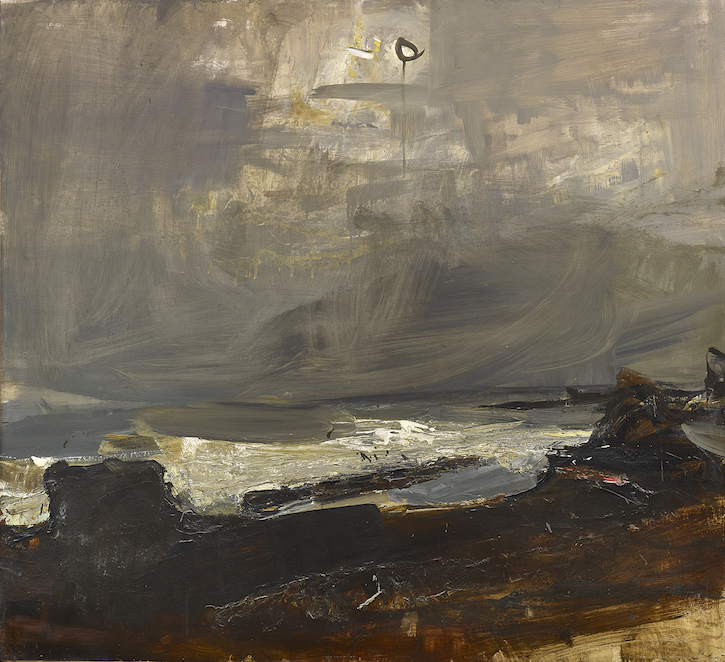
By the 1950s, Joan Eardley divided her life between her studio in Townhead and the fishing village of Catterline. She felt at ease in these two contrasting localities. Over the succeeding decade, as if by accident, she created an epic vision of the world from no more than two streets and one small fishing hamlet. The late William Feaver described Eardley's seascapes as 'spuming escarpments'. We can recognise these in Winter Sea II, breakers rolling into the tight bay, dissipating their energy on its adamantine rock features and casting their spray onto the foreshore – where the artist has planted her board to the east of Catterline's pier.
Old Montrose – Summer
1980, oil on board by James Morrison (1932–2020) 
The Edinburgh School and wider circle play a key part in the 'Modern Masters' exhibition: Robert Henderson Blyth, William Johnstone, David McClure, William MacTaggart and Robin Philipson are all represented, offering a reminder of the importance of the painting schools of Scotland. There are several significant landscape paintings by the late, great James Morrison, following The Gallery's celebration of his life and work in 2022 – the artist was represented by The Gallery since 1959. There are also two rare examples from Victoria Crowe's A Shepherd's Life series contrasted by an enigmatic portrait painting from her Venice studio.
Known and Imagined World
2012, oil on linen by Victoria Crowe (b.1945) 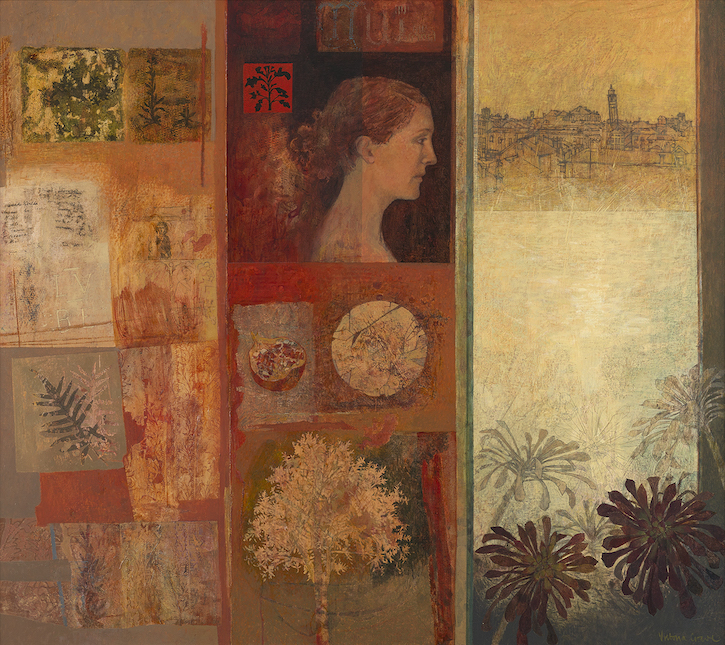
Known and Imagined World contains a portrait of Victoria Crowe's daughter, Gemma Gray. This portrait is contained within several other images: Venice, plant studies and details from the medieval city, with the overall composition seen as a marriage portrait. This is a rich, complex painting which appears serene, outward-looking and joyful.
The 'Modern Masters' series has not been without controversy. 'Modern Masters Women' in 2020 caused a national stir, demonstrating that a small independent gallery could generate local, national and international recognition for sitting women artists alongside their peers, and placing women at the centre of the art market decades before the broader art establishment. The art market in Scotland continues to be influenced by The Galley's work.
Creative collaboration is also a key part of The Gallery's work, teaming up with the Edinburgh-based Georgian Antiques and Dovecot Studios. The show has an important tapestry designed by Humphrey Spender and woven in 1951 at Dovecot, juxtaposed with a contemporary gun-tufted rug designed by Linda Green.
Phoenix (Blackbird)
1950–1951, tapestry by John Humphrey Spender (1910–2005) 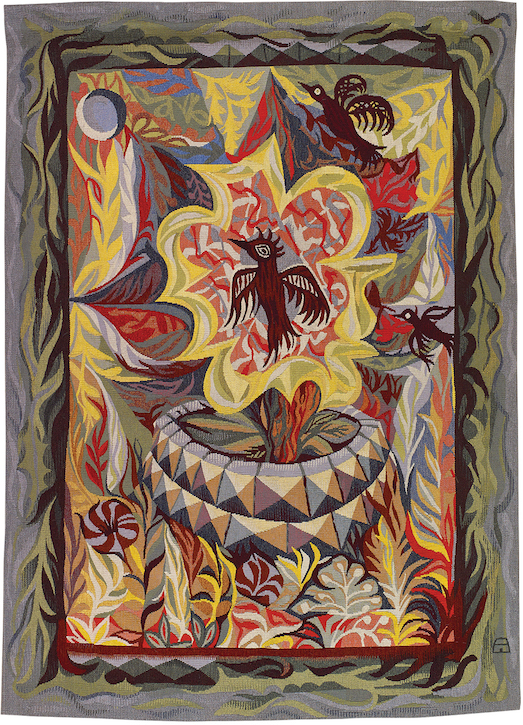
Humphrey Spender's tapestry design Phoenix was designed for Dovecot Studios in 1950, after their incorporation as Edinburgh Tapestry Company, and completed in 1951. At this time, resident Dovecot weavers were producing tapestries designed by English designers who were well established in the 1930s. Whilst Phoenix was not shown at The Festival of Britain of 1951, the year it was woven was a significant time. The title, Phoenix (Blackbird), makes its impulse to regeneration explicit and the choice of the blackbird as a quintessentially British songbird, both ordinary and emblematic, celebrates creativity. The design is brilliantly adapted for the medium using both colour and movement to push the motif to its crescendo.
The paintings, tapestries and furniture of 'Ten Years of Modern Masters' can be seen at The Scottish Gallery in Edinburgh until 28th January 2023.
Christina Jansen, Managing Director at The Scottish Gallery
